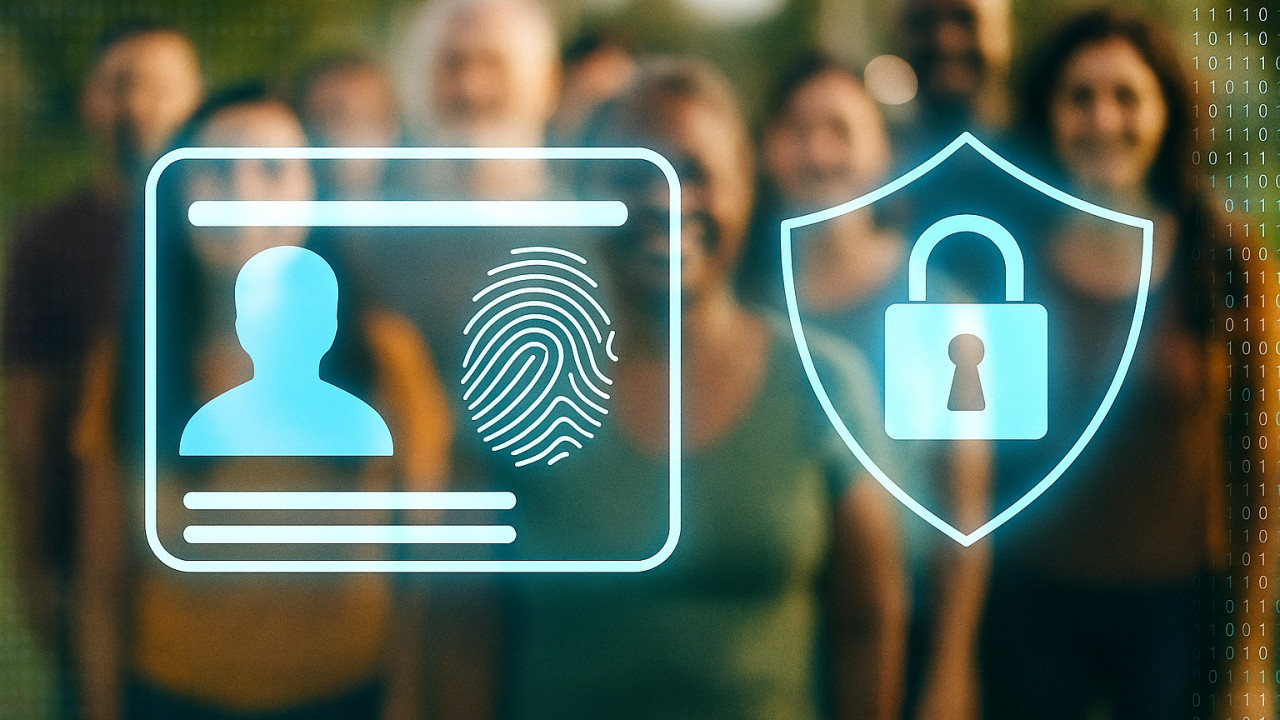Digital ID: The Key to a Modern UK or a Threat to Our Freedom?
There is a growing debate about digital ID, with many people expressing concern while others see potential benefits. Even among those I work with, opinions are divided. From my point of view, this should not be a matter for political point scoring. A digital ID is far too important to be treated as a battleground. What is needed instead is genuine collaboration between political parties to create a strategy that is resilient, protects privacy, includes everyone, and ensures proper oversight of its rollout. This is not simply a matter of technology but a fundamental change in how society verifies identity, one that must be built on trust, transparency, and shared responsibility.
What is Digital ID?
The government is introducing a free digital ID, securely stored on your phone, to make it easier to prove who you are. It will be rolled out to all UK citizens and legal residents before the end of this Parliament.
This digital ID will serve as proof of identity, age, and residency status, helping with access to government services and a wide range of private sector uses. Employers will be legally required to check it as evidence of the right to work, helping to prevent illegal employment and reduce small boat crossings. Importantly, as with current practice, the police will not be able to demand to see your digital ID.
It will be the authoritative proof of identity in the UK and is expected to include:
· Full name
· Date of birth
· Nationality or residency status
· A photo (used for biometric checks, similar to a passport or eVisa)
Consultation may also explore whether additional details, such as address, should be included.
The new system is designed to:
· Improve access to public services (education, healthcare, benefits, and voting)
· Reduce identity fraud by limiting the details you hand over
· Strengthen employment checks, including in the gig economy
· Streamline private-sector verification, such as opening bank accounts or proving your age
Overall, the digital ID aims to bring convenience, security, and trust to how identity is verified in the UK, while following best practice on fairness, inclusivity, and data privacy. A public consultation later this year will give people the chance to shape its final design.
What Data Does the Government Hold About You?
In the UK, the government maintains a broad set of data about citizens, held separately across different departments and agencies. This typically includes identity details such as name, date of birth, nationality, residency status, and official documents like passports and driving licences; civic and legal records including tax, National Insurance, electoral registration, and immigration or criminal history; health and social care information held by the NHS and welfare services; education, employment, and benefits data; and financial or property records such as pensions, council tax, vehicle registrations, and land ownership. Certain biometric, travel, and security-related data may also be collected where relevant. While these records are not stored in a single database, limited data sharing does occur between agencies for security, efficiency, and fraud prevention.
Online Verification of Driving Licences and Immigration Status
Driving Licence Validation For UK driving licences, you can generate a unique check code on the GOV.UK website. This code, which is valid for 21 days, allows third parties to view a summary of your licence details.
Immigration Status Immigration status in the UK can be confirmed online through the GOV.UK “Check someone’s immigration status” service, using a share code. Residents are able to create a GOV.UK account to access their eVisa (an online record of their status) and generate a share code, which can then be provided to landlords, employers, or other organisations that need to verify their right to rent, work, or access services.
How About Private Sector Personal Data Hoarding?
Large technology companies such as Google, Apple, Meta (Facebook, Instagram, WhatsApp), Microsoft, Amazon, and TikTok hold extensive amounts of personal data, often through consent given when signing up for their services or simply by using social media and mobile applications.
The types of information these companies collect include:
Identity and contact details: name, email, phone number, and sometimes proof of identity.
Location data: GPS tracking, IP address, and travel movements (e.g. Google Maps history).
Device and usage data: details of the devices you use, browsing history, app activity, and how you interact with their services.
Financial information: payment details for online purchases, subscriptions, and app store transactions.
Social and behavioural data: posts, messages, photos, likes, search history, and engagement across platforms.
Biometric and health data: facial recognition (e.g. Apple Face ID), fingerprints, voice recordings, and health or fitness tracking (e.g. Apple Health, Google Fit).
While such data is used to provide personalised services, advertising, and convenience, it also raises ongoing questions about privacy, consent, and how securely this information is stored and shared.
How Could Digital ID Help?
A digital ID could simplify and secure identity verification, making access to public and private services faster, more efficient, and more convenient. It would also strengthen trust, reduce fraud, and enable greater inclusion while supporting innovation and digital transformation.
Security and Scalability: Digital ID systems use advanced encryption and verification standards that make them far harder to forge than paper documents. They also enable faster and more reliable identity checks at scale, which is particularly valuable for large organisations such as banks and government agencies.
Convenience: Rather than managing multiple forms of identification, citizens could rely on a single, secure digital identity across a wide range of services. This would reduce bureaucracy, simplify processes, and save time for both individuals and institutions.
Age Verification: Digital ID could streamline age verification in shops, online gaming, hospitality, or social media platforms. Instead of handing over a passport or driving licence, a simple digital confirmation could be sufficient, protecting privacy while ensuring compliance with regulations.
Combating Fraud and Money Laundering: Fraudulent benefit claims, identity theft, and money laundering remain persistent challenges. A verified digital identity could significantly reduce such crimes by making impersonation and document forgery far more difficult.
Improved Access to Public Services: From healthcare to education, a secure digital ID could simplify access to public services. It would also help millions of people who face difficulties due to lost, outdated, or incomplete documentation.
Combating Illegal Immigration: A digital ID could assist employers and landlords in verifying immigration status with greater accuracy, helping to prevent illegal working and exploitation, while ensuring fairness in employment and housing.
Efficiency and Modernisation: Digital ID could reduce administrative costs and simplify identity verification for both government and businesses. It would enable faster, more secure access to public and private services, supporting broader digital transformation.
Empowerment and Trust: It would give individuals greater control over their personal data, strengthen trust in online interactions, and support cross-border interoperability by aligning with international standards for identity verification.
Inclusion and Sustainability: A digital ID could improve access for all citizens, including those without traditional identification, assist emergency services in verifying identities quickly, and reduce reliance on paper documents, contributing to both fairness and environmental sustainability.
What Other Countries Are Doing About Digital ID
Numerous countries globally have either recently introduced or are currently implementing digital ID systems as a way to improve service access, reduce fraud, and streamline identity verification processes.
Countries with Digital ID Systems include:
Estonia: A pioneer since 2002, used for government access, e-voting, healthcare, and banking.
Australia: Digital ID for access to both private and public services.
Denmark: National digital ID (MitID) for public services and private transactions, with a digital wallet.
India: The Aadhaar programme assigns a unique 12-digit digital ID, enabling cost savings in welfare but criticised for breaches and exclusion.
Singapore: Singpass is used widely for digital and in-person verification.
China: Launched a government-controlled digital ID via mobile app in July 2025
Costa Rica: Introduced a digital ID card as a full alternative to physical ones in September 2025.
South Korea: Rolled out a digital resident registration card in 2025, supporting mobile banking with biometric verification.
Recent and Upcoming Adopters include: Bosnia and Herzegovina, Rwanda (2026), United Arab Emirates, Greece, France, Austria, Latvia, Lithuania, and Sri Lanka.
Why Is There Resistance to Digital ID?
Digital ID carries risks to privacy and security, as storing sensitive personal data creates potential for misuse, breaches, and government overreach. It also raises concerns over exclusion, as those without access to technology or with low digital literacy may be left behind.
Key Risks include:
A Prime Target for Criminals: A centralised system for identity verification is an obvious target for cyber criminals and hostile actors. A single breach could expose the data of millions, causing harm far beyond the scale of typical data leaks.
Government Overreach: Critics argue that digital ID schemes rarely remain limited to their original purpose. What begins as a voluntary measure can easily become a requirement, a classic bait and switch dressed up as progress.
Privacy and Control: Entrusting sensitive identity data to the state raises an important question: who truly controls your identity? Once stored, the rules governing access can change and there is no guarantee that personal information will not be misused, shared, or repurposed without consent.
Towards a Papers Please Society: Civil liberties groups warn that digital ID risks normalising identity checks in everyday life. What starts as a convenience could become a routine demand, eroding privacy and individual freedom.
Exclusion and Dependency: If access to essential services such as healthcare, welfare or banking is tied to a digital ID, those unable or unwilling to use the system risk exclusion. This could create a divided society between those who comply and those who are left behind, a form of digital imprisonment.
Digital Inclusion: A digital ID assumes that everyone has access to the necessary technology. In reality, not everyone owns or can afford a smartphone or has reliable internet access. Without careful planning, digital ID could deepen inequality rather than resolve it.
Lack of Technology Knowledge: Not all citizens have the skills or confidence to navigate digital systems. Elderly people, those with disabilities, and those with limited digital literacy may struggle to use a digital ID, creating further barriers to accessing essential services.
Scope Creep and Surveillance: One of the greatest concerns is that once a digital ID system exists, it may be expanded into a tool for wider surveillance and control. Critics cite China’s social credit system as a warning. While the government has ruled out such plans, public scepticism remains strong.
My Perspective on Best Practices for a Digital ID Rollout
In my opinion, a digital ID will only succeed if it is founded on trust, resilience, and inclusivity, with privacy and security embedded from the start. Its rollout should be gradual, guided by public consultation and robust governance, to ensure it benefits all citizens fairly and effectively.
Resilient Infrastructure Against Cyber Attacks: Digital ID will be a high-value target. Infrastructure must be designed with resilience, redundancy, and recovery in mind.
Phased Approach and Pilot Rollout: Pilot schemes allow testing of technical, operational, and social aspects before nationwide rollout.
Not Mandated by Law: Mandating risks eroding trust. Voluntary adoption fosters confidence and legitimacy.
Privacy and Security by Design: Data should be minimised, encrypted, and controlled transparently by the citizen.
Transparency and Public Engagement: Open dialogue with the public must be continuous, not a one-off consultation.
Interoperability and Standards: Open standards should be adopted to prevent vendor lock-in and support cross-sector use.
Digital Inclusion Strategy: Address affordability, accessibility, and digital literacy, ensuring vulnerable groups are not left behind.
Ethical Considerations: Prevent discrimination, surveillance, and misuse with independent oversight.
Conclusion
A successful digital ID must be built on trust, inclusivity, and resilience. Its design requires privacy and security at its core, a staged rollout with careful testing, and the support of clear public engagement. Above all, it must be governed with transparency and strong ethical oversight that respects choice and avoids exclusion.
This is not simply a technical challenge but a societal one, demanding careful design and accountability at every step. As the government plans a public consultation later this year, every citizen has a vital opportunity to help shape the system’s final design. This engagement is essential to ensure the new digital ID is built on a basis of trust and shared responsibility, creating a tool that empowers individuals rather than controls them.
About the Author
Suraj Gyawali is a leading advocate for security and privacy by design. As founder and Chief Technology Officer of Simplified Solutions, he brings over 20 years’ experience driving strategic transformation in compliance and security for some of the world’s largest corporations and banks. Suraj has spoken at prestigious industry events, including the Payment Card Industry Security Standards Council (PCI) and the SANS Institute, sharing insights on protecting systems and data. As a local government borough councillor, he brings a grounded perspective on the needs of everyday citizens, emphasising trust, transparency and fairness in technology.
He holds a postgraduate degree specialising in security engineering and is Certified Information Systems Auditor (CISA), Certified Information Security Manager (CISM) and Certified Ethical Hacker (CEH), reflecting his deep expertise and commitment to protecting systems, data and society.






